Road barriers play an important role in construction, ensuring site safety and effective traffic control. Safety barriers serve as a physical and visual deterrent, protecting both workers and drivers from potential hazards.
In construction zones, safety must always be a top priority, and road barriers are essential tools in achieving this goal. They help prevent accidents, manage the flow of traffic, and delineate work areas.
This blog will explore the various types of road barriers used in construction, their importance in maintaining safety, and how they contribute to efficient traffic management.
What are road barriers?
Road barriers are physical structures installed along roadways and construction sites to control and manage the flow of traffic, enhance safety, and prevent accidents. They serve as protective measures for both vehicles and pedestrians, providing clear demarcation of road boundaries and work zones.
They come in various forms and serve multiple purposes, ranging from preventing accidents to demarcating construction zones.
Applications of road barriers in construction
In the construction industry, road barriers protect workers and equipment from passing vehicles. They create a safe work environment by clearly separating work zones from active traffic lanes.
A few ways road barriers are utilised to ensure safety and protect workers are:
- Safeguard construction workers by creating a secure zone away from traffic.
- Prevent accidents and injuries by providing a physical barrier for workers to be able to perform their tasks safely.
- Block off areas on sites where heavy machines are operating to avoid intrusions by vehicles or pedestrians.
- Barriers around excavation sites can prevent vehicles from driving into open trenches for the safety of drivers and construction crews.
Benefits of safety barriers on roads
The use of road barriers provides several advantages, contributing to overall road safety and efficiency:
- Traffic management: Barricades help direct the flow of traffic, particularly in construction zones or during road maintenance.
- Accident reduction: Minimises the risk of vehicles leaving the roadway or colliding with dangerous obstacles.
- Reduces collision severity: Certain types of barriers, like crash cushions, are designed to absorb the impact energy of a collision, reducing injury severity and vehicle damage.
- Pedestrian safety: In areas where roads intersect with pedestrian pathways, safety barriers provide a protective buffer, enhancing pedestrian safety.
- Work zone safety: Protects construction and maintenance crews by creating a physical barrier between them and moving traffic.
- Prevents unauthorised access: Barriers prevent pedestrians and unauthorised vehicles from entering dangerous or restricted areas, maintaining security and safety.
- Property and infrastructure protection: Prevents damage to roadside properties and infrastructure by containing and redirecting errant vehicles.
- Reduce head-on collisions: Barriers separate lanes and provide a clear indication of road boundaries, reducing the risk of head-on collisions and side-swipes.
- Temporary traffic management: Safety barriers can be easily installed and removed, making them ideal for temporary construction projects and roadworks.
- Emergency management: Safety barriers can help manage and control traffic flow during emergencies ensuring that emergency vehicles can reach their destinations without obstruction.
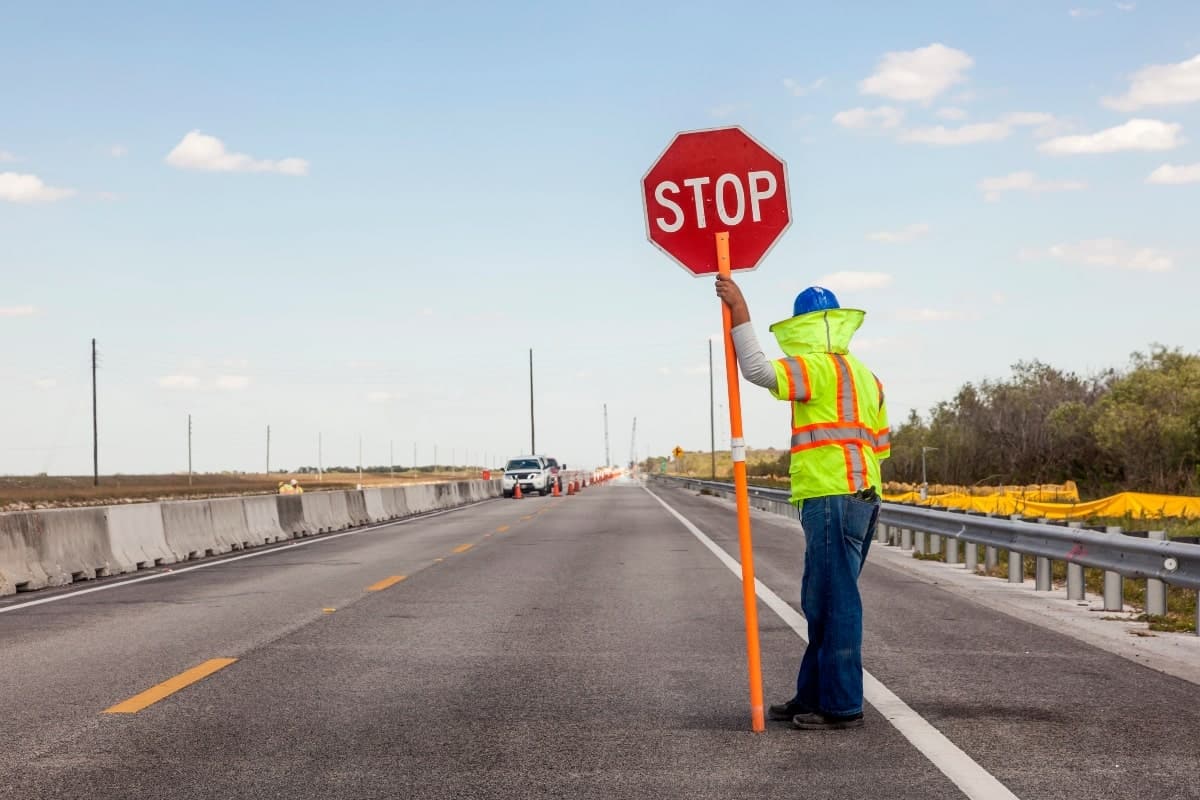
Types of road barriers
Road barriers come in various forms, each designed to address specific safety needs and traffic conditions.
Understanding the different types of barriers can help in choosing the most appropriate solution for enhancing road safety and managing traffic.
Here are some of the most commonly used road barriers:
Concrete safety barriers
Concrete barriers are robust, immovable structures used to separate lanes of traffic on highways or to protect work zones in construction areas.
- Durability: Made from reinforced concrete, these barriers are highly durable and can withstand significant impact without being displaced.
- Permanent installation: Concrete barriers are typically used for long-term installations on highways, bridge approaches, and median dividers.
- Impact resistance: Designed to absorb and deflect the impact of vehicles, reducing road safety risks and the severity of accidents.
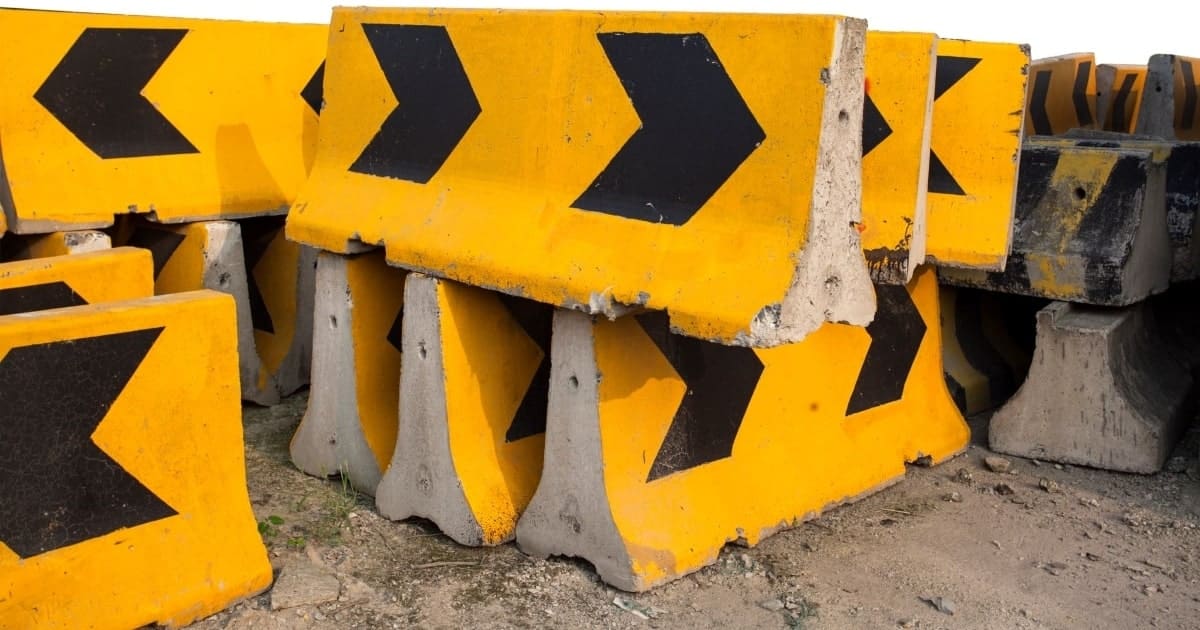
Guardrail barriers
Guardrails are metal barriers commonly installed along the edges of roads, especially on curves and slopes.
- Flexibility: Guardrail barriers are made of steel and flex upon impact, used to slow down and redirect errant vehicles from leaving the road.
- Versatility: Road safety barriers suitable for installation along the edges of roads, around sharp curves, and on steep embankments.
- Safety: These barriers prevent vehicles from leaving the roadway, thereby reducing the risk of rollovers and severe crashes.

Temporary barriers
Temporary fencing and crowd control barriers are commonly used in construction areas to protect workers and equipment from passing traffic.
- Ease of installation: Temporary barriers and safety fencing can be quickly set up and removed, ideal for short-term construction projects or emergency roadworks.
- Flexibility: Can be easily repositioned or adjusted to accommodate changing site conditions or project needs.
- Cost-effective: A practical barrier system for temporary traffic or crowd control without the need for permanent installation.
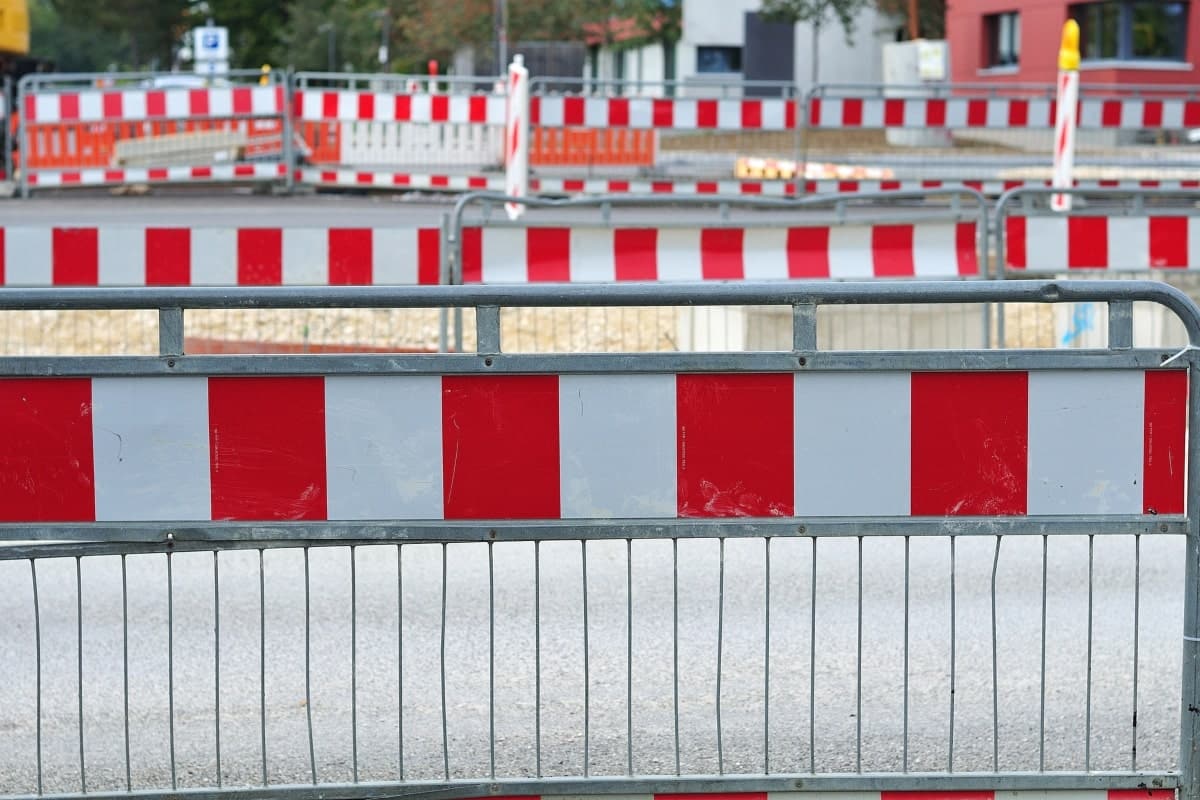
Traffic barriers
These barriers include a range of products such as bollards, delineators, and crash cushions, each serving a specific purpose in managing traffic.
- Traffic control: Traffic barriers are designed to manage and control the flow of traffic in various situations, such as lane closures and detours.
- Warnings: Traffic barriers often include signage and reflective materials to provide clear guidance to drivers.
- Pedestrian safety: Used to create safe pathways for both vehicles and pedestrians, reducing the likelihood of accidents in high-traffic areas.
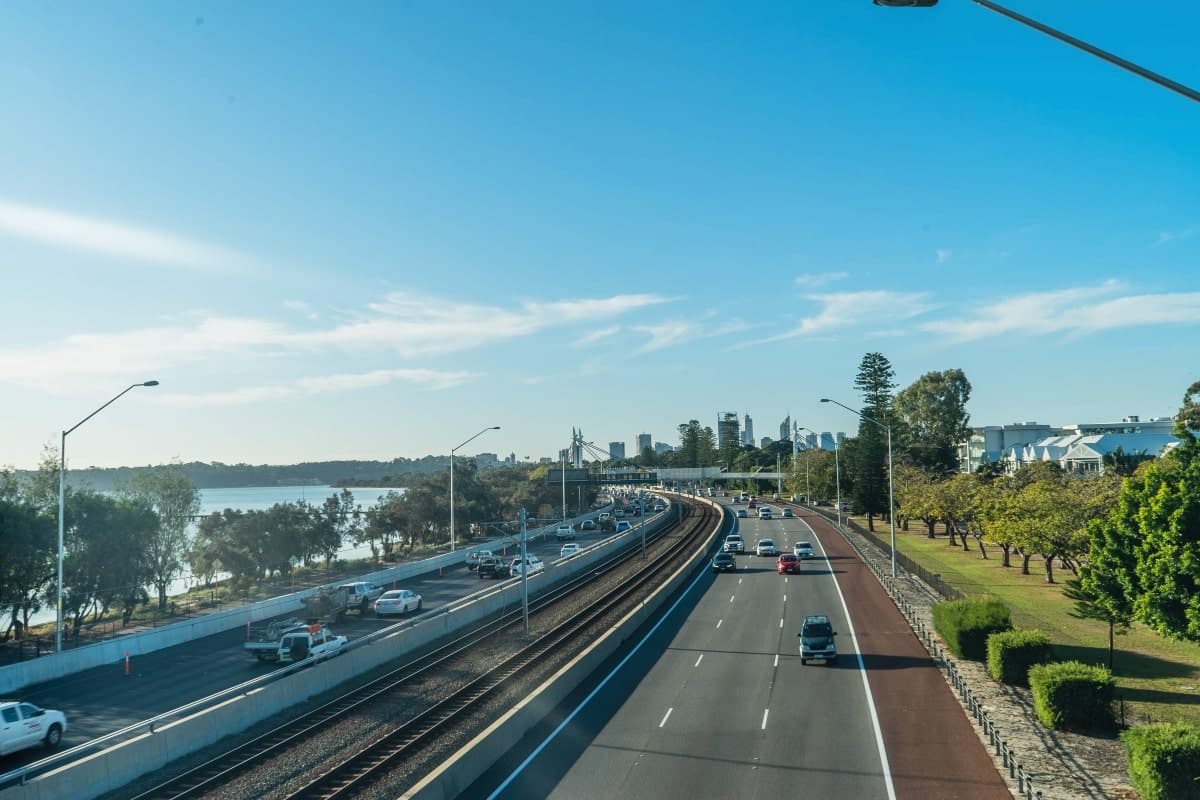
Water filled barriers
Lightweight and portable, water-filled barriers are made of durable plastic making them ideal for temporary traffic control and construction zones.
- Portability: Lightweight and easy to transport, water-filled barriers can be quickly deployed in temporary work zones or during outdoor events.
- Stability: Filled with water after placement, they gain the necessary weight to remain stable under impact.
- Visibility: Often brightly coloured and equipped with reflective strips, they enhance visibility, especially in low-light conditions.
Selecting the right road safety barrier system
Effective road barriers must have certain features to ensure maximum safety and functionality. When choosing road barriers consider factors like site conditions, material, durability and ease of installation.
Temporary vs. Permanent barriers
Understanding the needs of your project will help you decide which type of barrier and construction fencing is most effective.
Temporary barriers offer flexibility and are ideal for short-term projects or changing requirements. Whereas, permanent barriers are suitable for long-term use and provide robust protection.
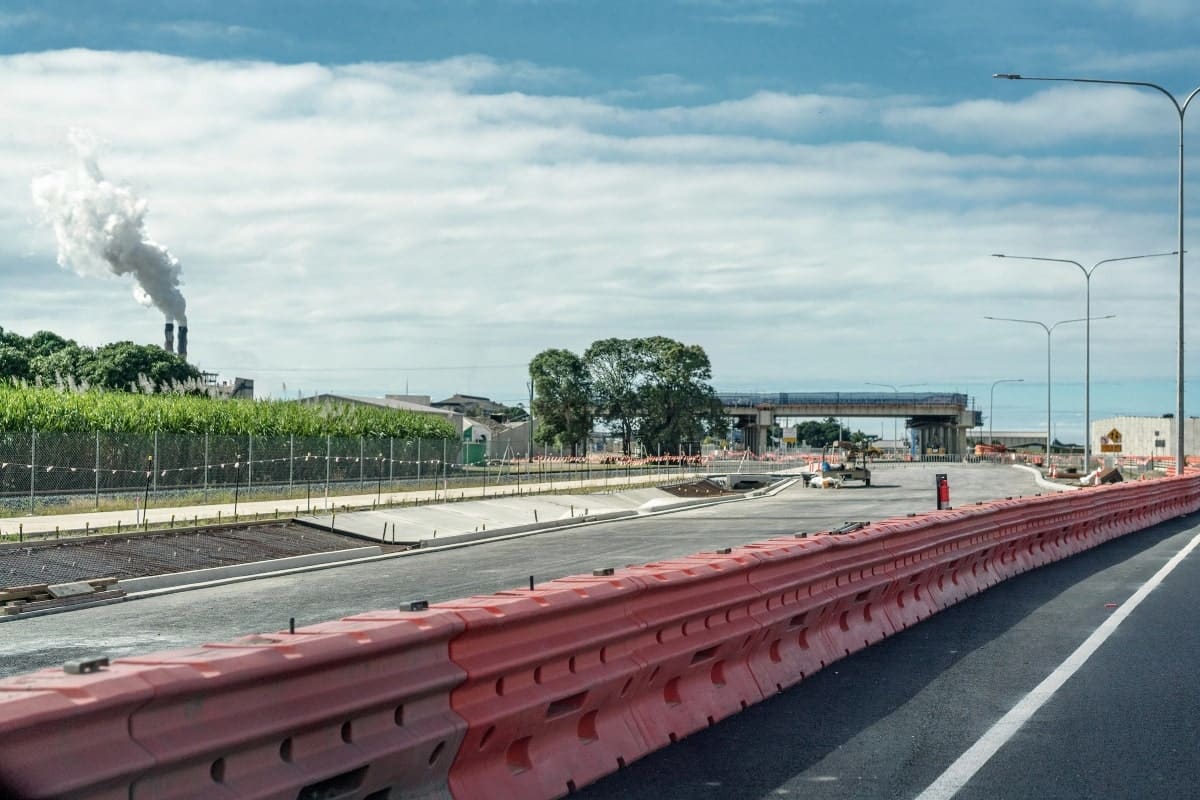
Best practices for implementing road barriers
Placement and installation
Barriers should be installed at strategic locations for maximum protection and clear guidance.
- Follow best practices for installing barriers to ensure they are effective and reliable.
- Set barriers at the beginning and end of the construction area, adding more at regular intervals.
- See that they are visible to oncoming traffic. Use reflective materials or lights for better visibility at night or in low-light conditions.
The installation varies with the type of barrier:
- For concrete barriers, use heavy machinery to place them on level ground.
- Water-filled barriers are easier; position them and then fill them with water for stability.
- Metal guardrails require posts in the ground with railings.
- You can place plastic barriers manually, and then connect them with pins or brackets to keep them in place.
Maintenance and monitoring
Regular maintenance and monitoring of road barriers ensure they remain effective over time. This includes checking for damage, visibility and repairing when necessary.
Proper maintenance guarantees that barriers will continue to provide the level of safety you require for drivers and workers. After all, you want barriers to perform their protective role without fail.
Work safer near roads with TTFS
Investing in road safety barriers in high-risk construction ensures the protection of both workers and drivers, reducing the risk of accidents and injuries.
To enhance the safety of your construction site or a quote for barriers and temporary fencing, contact our team today at 1300 119 998.
TTFS delivers nationwide, with depots in Melbourne, Sydney, Brisbane, Perth and Adelaide, so you can rely on TTFS for exceptional service and fast delivery.

